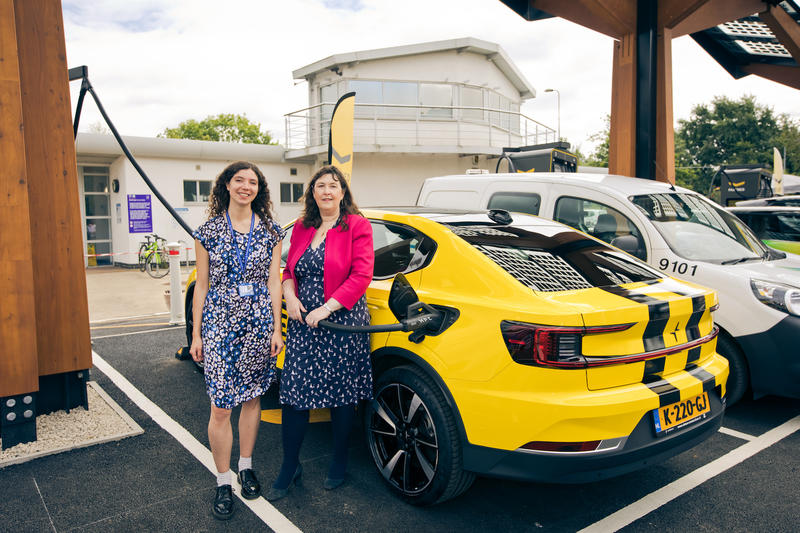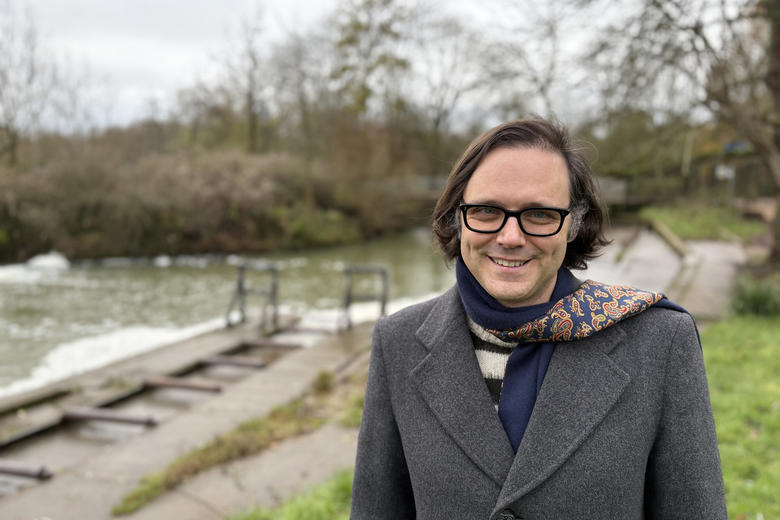OXFORD OPENS A BIG ELECTRIC CAR CHARGING HUB

OXFORD OPENS A BIG ELECTRIC CAR CHARGING HUB
Alumni attending Meeting Minds with an electric car will be able to charge at one of Europe’s top sites
Published: 19 August 2022
Author: Richard Lofthouse
Share this article
July 5 saw the opening of a new electric vehicle (EV) charging ‘super’ hub within Redbridge Park and Ride, the Park and Ride that takes you into Oxford along Abingdon Road towards Folly Bridge and Christ Church.
Claimed to be the ‘most powerful’ in Europe, the site is certainly the result of significant investment and multiple partners which include the University’s Department of Engineering Science.
Other participants include Pivot Power, part of EDF Renewables, Oxford City Council, Dutch group Fastned, EV car maker Tesla and the Spanish utility Wenea.
The novel aspect of the installation is that the charging hub is directly connected to National Grid’s high voltage transmission network at Cowley. With 10MW of installed capacity it can scale with EV adoption and ultimately grow to provide charging for up to 400 cars.

Fastned UK Manager Tom Hurst, who spoke to QUAD, said that the approach had been one of future proofing, allowing rapid scaling in the future according to demand and as the public gradually make the leap to EVs.
Fastned has initially installed ten charging bays at the Superhub with 300 kW of power available, theoretically capable of adding 300 miles of range in just 20 minutes.
The average home charger is 7 kW, while the fastest-charging electric cars available today are still restricted to 150kW.
Additionally, there are 20 Wenea chargers rated at 7-22 kW, and a further 12 Tesla chargers at 250kW, restricted to Tesla owners.
The site aims to cater for a range of vehicles and charging needs, from people who need to top-up quickly and be on their way, to those using the park & ride to travel into the city centre, who can charge over longer periods.
It’s all part of the £40 million Energy Superhub Oxford project, 25% of which has been funded by the UK government partly for this purpose. It is being seen as a pilot for other towns and cities across the UK.
Councillor Imogen Thomas, Cabinet Member for Zero Carbon Oxford and Climate Justice, Oxford City Council, said: 'In order to achieve a Zero Carbon Oxford by 2040 we need to encourage uptake in electric vehicles, and drivers want to know that they can charge their vehicles quickly and efficiently. The completion of Energy Superhub Oxford is an exciting step for our city and the future of EV charging.'
Pictured above, next to Councillor Susan Brown (Brown is on the right), Leader of the Council, Oxford City Council, the project has to a considerable extent been driven by women.
Thomas notes a further symmetry – the fact that it will be fifty years in 2023 since Redbridge opened as Oxford’s first Park and Ride, a measure of how problematic traffic has been in Oxford city centre for decades.
The battery component, which the University’s Professor David Howey has been modelling, is actually two batteries – a 50MW/50MWh lithium-ion unit and a smaller 2 MW/5MWh vanadium flow battery, which is more experimental but won’t degrade with use and is therefore of interest.
Professor Howey explains that his team’s involvement concerns monitoring and comparing the performance of the batteries from a technical perspective, considering efficiency, and an environmental one, considering CO2 emissions.

The installation has further dimensions, including a substation at Oxford Bus Company’s depot on Watlington Road – ready to help electrify the city’s bus fleet - and domestic heating via ground source heat pumps to 60 homes in Blackbird Leys.
The overall idea is to address all the energy needs of a community, not just EVs, thus addressing the more fundamental Oxford City Council target of net zero by an ambitious 2040.
Project guidance on a devoted website says,
‘Energy Superhub Oxford will provide a blueprint for cities around the world to simultaneously scale up green transport, power and heating, pushing new frontiers in the race to keep global warming below 1.5°C.’
The charging hub will be powered entirely by renewable energy contracts, and with 10 MW of installed capacity on site, the hub can scale up rapidly as more electric vehicles are bought.
One of the other pilots in the same programme, backed by central government, is the installation of a similar integrated energy system (IES) in Orkney, Scotland.
Called ReFLEX (Responsive Flexibility), the project aims to interlink local electricity, transport and heat networks into one controllable, overarching system, digitally connecting distributed and variable renewable generation to flexible demand.
Rather fortuitously for Oxford and Oxfordshire, the third national pilot is Project Local Energy Oxfordshire (LEO), and relates directly to Redbridge because it is all about the same subject – energy flexibility, local renewables, and grid flexibility.















